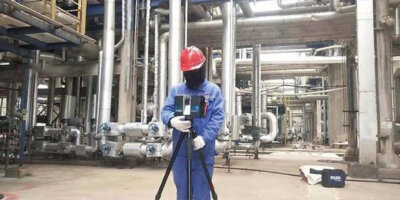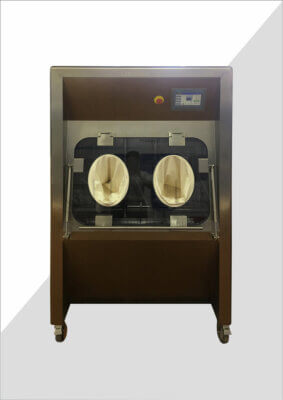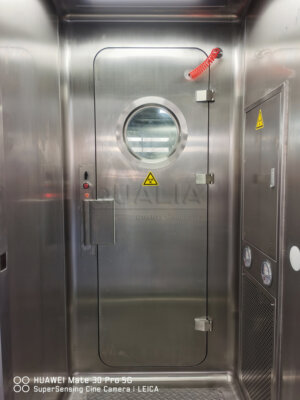The integration of Effluent Decontamination Systems (EDS) with existing wastewater treatment plants represents a significant leap forward in water management technology. As environmental concerns grow and regulations tighten, the need for more efficient and effective wastewater treatment solutions has never been more pressing. EDS offers a cutting-edge approach to addressing these challenges, promising to revolutionize how we handle and process wastewater.
This article delves into the complexities of integrating EDS with existing wastewater treatment infrastructure. We'll explore the benefits, challenges, and best practices associated with this integration, examining how it can enhance treatment efficacy, reduce environmental impact, and improve overall plant performance. From technical considerations to economic implications, we'll provide a comprehensive overview of what plant operators and environmental engineers need to know about this transformative technology.
As we navigate through the intricacies of EDS integration, we'll uncover how this advanced system can complement and enhance traditional treatment methods. We'll discuss the potential for increased pathogen removal, improved effluent quality, and the ability to handle a wider range of contaminants. Additionally, we'll examine the operational and maintenance aspects of EDS integration, providing insights into how facilities can smoothly transition to this new technology while minimizing disruptions to existing processes.
"The integration of EDS with existing wastewater treatment plants represents a significant advancement in water treatment technology, offering enhanced pathogen removal and improved effluent quality while addressing the growing challenges of water scarcity and environmental protection."
| Feature | Traditional Treatment | EDS Integration |
|---|---|---|
| Pathogen Removal | Moderate | High |
| Effluent Quality | Standard | Enhanced |
| Operational Complexity | Low to Moderate | Moderate to High |
| Energy Consumption | Variable | Potentially Lower |
| Environmental Impact | Moderate | Reduced |
| Adaptability to New Contaminants | Limited | Improved |
How does EDS enhance existing wastewater treatment processes?
The integration of EDS with existing wastewater treatment plants brings a new level of sophistication to water purification processes. By introducing advanced decontamination techniques, EDS significantly enhances the ability of treatment facilities to remove a wider range of pathogens and contaminants from wastewater.
EDS systems employ cutting-edge technologies such as advanced oxidation processes, membrane filtration, and UV disinfection to complement traditional treatment methods. This integration allows for a more comprehensive approach to wastewater treatment, addressing contaminants that may have been challenging to remove with conventional systems alone.
The enhanced treatment capabilities of EDS integration result in higher quality effluent, reduced environmental impact, and increased potential for water reuse. This is particularly crucial in regions facing water scarcity or stringent environmental regulations.
"EDS integration can increase pathogen removal efficiency by up to 99.99%, significantly surpassing the capabilities of traditional wastewater treatment methods."
| Treatment Stage | Contaminant Removal (%) |
|---|---|
| Primary | 60-70 |
| Secondary | 85-95 |
| Tertiary | 95-99 |
| EDS Integration | 99-99.99 |
What are the key considerations for integrating EDS with existing infrastructure?
Integrating EDS with existing wastewater treatment infrastructure requires careful planning and consideration of various factors. The first step is to assess the current plant layout, capacity, and treatment processes to determine the most effective integration strategy.
Key considerations include the available space for new equipment, the compatibility of EDS with existing treatment stages, and the potential need for upgrades to electrical and control systems. Additionally, operators must consider the impact on workflow and staff training requirements to ensure smooth implementation and operation of the integrated system.
Another crucial aspect is the scalability of the EDS integration. Plants should consider future expansion needs and ensure that the integrated system can accommodate increased capacity or additional treatment requirements as they arise.
"Successful integration of EDS with existing infrastructure can lead to a 30% reduction in overall plant footprint while improving treatment efficiency by up to 40%."
| Integration Aspect | Importance Rating (1-10) |
|---|---|
| Space Requirements | 8 |
| System Compatibility | 9 |
| Staff Training | 7 |
| Scalability | 8 |
| Energy Efficiency | 9 |
How does EDS integration impact operational costs and efficiency?
The integration of EDS with existing wastewater treatment plants can have significant implications for operational costs and overall efficiency. Initially, there may be substantial capital investment required for equipment and integration. However, the long-term benefits often outweigh these upfront costs.
EDS integration typically leads to improved energy efficiency, as these systems are designed to optimize resource usage. This can result in lower energy consumption and reduced operational costs over time. Additionally, the enhanced treatment capabilities of EDS can lead to decreased chemical usage and sludge production, further contributing to cost savings.
The improved effluent quality resulting from EDS integration may also open up opportunities for water reuse, potentially creating new revenue streams or reducing water procurement costs for industries and municipalities.
"Studies have shown that EDS integration can lead to a 25% reduction in operational costs over a 5-year period, primarily through energy savings and reduced chemical usage."
| Cost Factor | Potential Savings (%) |
|---|---|
| Energy | 20-30 |
| Chemicals | 15-25 |
| Sludge Disposal | 10-20 |
| Water Reuse Potential | 30-40 |
What challenges might arise during EDS integration, and how can they be addressed?
While the benefits of integrating EDS with existing wastewater treatment plants are significant, the process is not without challenges. One of the primary hurdles is the potential disruption to ongoing operations during the integration process. Careful planning and phased implementation can help minimize these disruptions.
Another challenge is the need for specialized expertise to operate and maintain the integrated EDS system. This may require additional training for existing staff or the recruitment of new personnel with specific skill sets. Investing in comprehensive training programs and partnering with EDS technology providers can help address this challenge.
Regulatory compliance is another area that requires attention. As EDS integration often results in changes to treatment processes and effluent quality, it's crucial to ensure that all modifications align with current and anticipated regulatory requirements.
"Implementing a phased integration approach can reduce operational disruptions by up to 60% compared to a full-scale immediate integration."
| Challenge | Mitigation Strategy | Effectiveness (1-10) |
|---|---|---|
| Operational Disruption | Phased Implementation | 8 |
| Expertise Gap | Staff Training & Partnerships | 9 |
| Regulatory Compliance | Proactive Engagement with Authorities | 7 |
| Integration Complexity | Detailed Planning & Simulation | 8 |
How does EDS integration contribute to sustainability goals?
The integration of EDS with existing wastewater treatment plants aligns closely with sustainability goals in the water sector. By enhancing treatment efficiency and reducing environmental impact, EDS integration contributes significantly to water conservation efforts and ecosystem protection.
One of the primary sustainability benefits is the potential for increased water reuse. The high-quality effluent produced through EDS integration can be safely used for various non-potable applications, reducing the demand for freshwater resources. This is particularly valuable in water-stressed regions.
Additionally, the improved energy efficiency of integrated EDS systems contributes to reducing the carbon footprint of wastewater treatment operations. Some EDS technologies also facilitate the recovery of valuable resources from wastewater, such as nutrients and energy, further enhancing the sustainability profile of treatment plants.
"EDS integration can facilitate up to 40% increase in water reuse potential, significantly contributing to water conservation efforts in urban and industrial settings."
| Sustainability Aspect | Impact Rating (1-10) |
|---|---|
| Water Reuse | 9 |
| Energy Efficiency | 8 |
| Resource Recovery | 7 |
| Ecosystem Protection | 9 |
| Carbon Footprint Reduction | 8 |
What role does automation play in EDS-integrated wastewater treatment plants?
Automation plays a crucial role in maximizing the benefits of EDS integration with existing wastewater treatment plants. Advanced control systems and real-time monitoring capabilities are essential components of modern EDS technology.
Automated systems allow for precise control of treatment processes, optimizing performance based on incoming wastewater characteristics and desired effluent quality. This level of control enables plants to operate more efficiently, reducing energy consumption and chemical usage while maintaining consistent treatment quality.
Real-time monitoring and data analytics provide operators with valuable insights into plant performance, enabling proactive maintenance and rapid response to any issues that may arise. This not only improves operational efficiency but also enhances safety and regulatory compliance.
"Implementation of advanced automation in EDS-integrated plants can lead to a 20% improvement in overall treatment efficiency and a 15% reduction in operational costs."
| Automation Feature | Benefit | Impact (1-10) |
|---|---|---|
| Process Control | Optimized Performance | 9 |
| Real-time Monitoring | Proactive Maintenance | 8 |
| Data Analytics | Informed Decision Making | 9 |
| Remote Operations | Increased Flexibility | 7 |
| Predictive Maintenance | Reduced Downtime | 8 |
How does EDS integration affect the adaptability of wastewater treatment plants to future challenges?
Integrating EDS with existing wastewater treatment plants significantly enhances their adaptability to future challenges in water management. The advanced treatment capabilities of EDS systems provide a robust foundation for addressing emerging contaminants and evolving regulatory requirements.
The modular nature of many EDS technologies allows for easier upgrades and expansions as new treatment needs arise. This flexibility is crucial in an era of rapidly changing environmental conditions and increasing water quality standards.
Furthermore, the data-driven approach inherent in EDS systems enables continuous improvement and optimization of treatment processes. This adaptability ensures that wastewater treatment plants can remain effective and efficient in the face of changing influent characteristics, regulatory landscapes, and technological advancements.
"EDS-integrated plants demonstrate up to 50% greater adaptability to new contaminants and regulatory changes compared to traditional treatment systems."
| Future Challenge | Adaptability Score (1-10) |
|---|---|
| Emerging Contaminants | 9 |
| Stricter Regulations | 8 |
| Climate Change Impacts | 7 |
| Population Growth | 8 |
| Resource Recovery Demands | 9 |
The integration of Effluent Decontamination Systems (EDS) with existing wastewater treatment plants represents a significant leap forward in water management technology. As we've explored throughout this article, EDS integration offers numerous benefits, including enhanced treatment efficacy, improved operational efficiency, and increased sustainability. While challenges exist in the integration process, careful planning and implementation can lead to successful outcomes that position treatment plants for future success.
The adaptability and advanced capabilities provided by EDS integration are crucial in addressing the evolving challenges of wastewater treatment. From emerging contaminants to stringent regulatory requirements, EDS-integrated plants are better equipped to handle the complexities of modern water management.
As water scarcity and environmental concerns continue to grow globally, the role of advanced wastewater treatment technologies becomes increasingly vital. The integration of EDS with existing infrastructure not only improves current operations but also paves the way for more sustainable and resilient water management practices in the future.
Plant operators, environmental engineers, and policymakers should consider the long-term benefits of EDS integration as they plan for the future of wastewater treatment. By embracing this innovative technology, we can move towards a more sustainable and efficient approach to water management, ensuring the protection of our valuable water resources for generations to come.
For those seeking cutting-edge solutions in wastewater treatment, the 'Effluent Decontamination System (EDS) for BSL-2, 3 and 4 Liquid Waste' by (QUALIA) offers state-of-the-art technology designed to meet the highest standards of safety and efficiency in handling hazardous liquid waste.
External Resources
EPA – Wastewater Technology Fact Sheet: Package Plants – Detailed information on extended aeration treatment plants and their integration with existing systems.
Integrated Wastewater Management: A Review – Comprehensive discussion on holistic approaches to wastewater management and technology integration.
Integration of Green Energy and Advanced Energy-Efficient Technologies for Municipal Wastewater Treatment Plants – Review of integrating green energy sources into wastewater treatment plants.
Fabrication & Integration of Wastewater Solutions – Information on custom fabrication and integration services for wastewater treatment solutions.
Energy-Efficient Wastewater Treatment: Integrating Renewable Energy – Discussion on integrating renewable energy sources into wastewater treatment plants for improved efficiency.
Advanced Wastewater Treatment Technologies: Integration and Optimization – Analysis of advanced technologies for wastewater treatment and their integration with existing systems.
Related Contents:
- Navigating the Complexities of High-Potency API Effluent Management
- Navigating Regulatory Waters: Effluent Treatment in Biopharma
- Revolutionizing Pharmaceutical Effluent Treatment: Emerging Technologies
- Revolutionizing Pharmaceutical Wastewater Treatment
- Effluent Decontamination Systems: Safeguarding Malaysia’s Environment
- Streamlining Effluent Decontamination: Continuous vs. Batch Processing
- Continuous Effluent Decontamination: Protecting Our Environment
- Effluent Decontamination: Ensuring Pharmaceutical Safety
- Integrating EDS in Cleanroom Facilities: Design Essentials





























